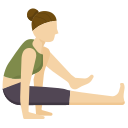Start Here: Breathing Techniques for Beginners
Chosen theme: Breathing Techniques for Beginners. Begin a calm, practical journey into your breath with simple steps, friendly science, and everyday practices you can use immediately.

Breath Basics: Why Beginners Start Here
Slow, gentle breathing signals safety to your nervous system, softening heart rate and easing tension. Nasal breaths filter air, release a bit of nitric oxide, and help blood carry oxygen efficiently. Think of your breath as a remote control for calm—always available, incredibly portable, and surprisingly powerful for beginners.
Diaphragmatic Breathing Step by Step
Place one hand on your chest and one on your belly. Breathe in through your nose, letting the belly hand rise slightly while the chest hand stays relatively still. Keep the inhale quiet and gentle, then exhale slowly. A few relaxed rounds build awareness and confidence for beginners.

Four by Four Made Friendly
Inhale through your nose for four counts, hold for four, exhale for four, hold for four. Keep the breath light and effortless, not forced. Visualize tracing a square with each phase. Beginners often find this rhythmic structure comforting and easy to remember under pressure.
When to Use It
Try box breathing before a presentation, during a commute, or while waiting in a long line. The measured pauses encourage poise. Even two or three cycles can shift your mood from scattered to centered. Tell us your favorite setting, and we’ll feature reader tips in the next post.
Practice with Us
Set a timer for two minutes. Follow the four-count pattern and notice your shoulders, jaw, and forehead soften. If four counts feel tight, use three. Comfort beats intensity. Comment with your ideal count and subscribe for guided audio to refine your beginner rhythm.
The 4-7-8 Method for Evening Unwind
01
Longer exhales activate the parasympathetic response, the body’s relaxation mode. The 4-7-8 ratio gives beginners a clear structure that encourages stillness and quiet. It can help downshift racing thoughts and ease restlessness before bed, especially when paired with dim light and silence.
02
Inhale softly through your nose for a count of four, hold for seven, then exhale gently through pursed lips for eight. Keep the breath light, never straining. Start with two rounds. If you feel faint or breathless, reduce counts and rest. Your comfort is the compass for progress.
03
Try two rounds at dusk, then add a third after a week. Journal how quickly your body settles. Pair the practice with a warm tea or a short stretch. Share your wind-down stack and subscribe to receive a printable sleep checklist built for beginners.
Nasal Breathing and Gentle CO2 Tolerance
Nasal breathing filters, warms, and humidifies air while supporting a steady flow. It also helps release a small amount of nitric oxide, which assists oxygen delivery. For beginners, this means smoother breaths, fewer throat irritations, and an easier time staying relaxed during practice.


Nasal Breathing and Gentle CO2 Tolerance
Feeling air hunger during slow breathing can simply mean your body is adjusting to carbon dioxide. Go gently. Aim for comfortable, quiet breaths rather than big ones. Over time, your tolerance improves, and calm arrives more quickly. Beginners thrive on patience and consistency.



